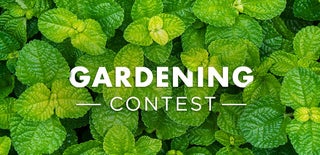Introduction: 3D Printed Geometric Planter With Drainage
I designed and 3D printed this geometric succulent planter, which has five chambers with drainage and a catch tray.
Supplies
- 3D design software, I'm using Tinkercad (free)
- 3D printer, I'm using the Creality CR10s Pro
- PLA filament, I'm using Hatchbox 1.75mm in Pure White and Wood
- Spray sealant such as Rust-oleum concrete sealer
- Potting soil (formulated for succulents)
- Small to medium sized succulents
- Succulent container gardening toolkit (optional but handy)
- Grow lamp (optional but useful in winter when it's too cold by the window)
To keep up with what I'm working on, follow me on YouTube, Instagram, Twitter, Pinterest, and subscribe to my newsletter. As an Amazon Associate I earn from qualifying purchases you make using my affiliate links.
Step 1: 3D Model
I designed it in Tinkercad, where you can copy the original design file:
I've also uploaded the STLs to Thingiverse and attached them to this step.
To model the planter, I hollowed out a truncated octahedron, which is available deep in the Shape Generators section of the Tinkercad parts bin. Models are made up of solids and holes, so the hole centered within the solid, when merged, will result in a thin-walled hollow form. After duplicating and arranging the shapes, I then opened up the tops by merging with some rectangle shaped holes. The drainage is accomplished the same way. You can remix this model by making a copy of it on Tinkercad.
Disclosure: at the time of this writing, I'm an employee of Autodesk, which makes Tinkercad.
I sliced the model for printing using Cura to prep for printing on the Creality CR10s Pro.
Step 2: Slice and Print
I printed the model using Hatchbox PLA in pure white and wood varieties.
Print settings:
- Rafts: no
- Supports: no
- Resolution: .2
- Infill: none needed if unscaled, 20% recommended if upscaling the STL
Step 3: Sealant
I spray my planters with concrete sealant to protect them from water and UV and prolong their life (not suitable for plants you plan to eat, like herbs).
Step 4: Plant and Enjoy!
For succulents, use a potting soil formulated for them with good drainage. It's important that they can dry out completely between waterings, and the plastic doesn't allow water to evaporate through it like a clay pot would, making the soil mix that much more important.
You can use this planter as an incubator for baby cuttings, or dedicate a chamber to each plant. I keep mine in a south-facing window in the warmer months, and under a grow lamp in the winter. If you make one, I'd love to see it in the I Made It section below!
If you like this project, you may be interested in some of my others:
- LED Mason Jar Lanterns (3D printed lid)
- 3D Printer Filament Dry Box
- Tips for Moving in New York City
- Glowing LED Gummy Candy
- Mini Concrete Planters Using Plastic Bottles
- Glowing 3D Printed Flowers
To keep up with what I'm working on, follow me on YouTube, Instagram, Twitter, and Pinterest.

Participated in the
Gardening Contest















